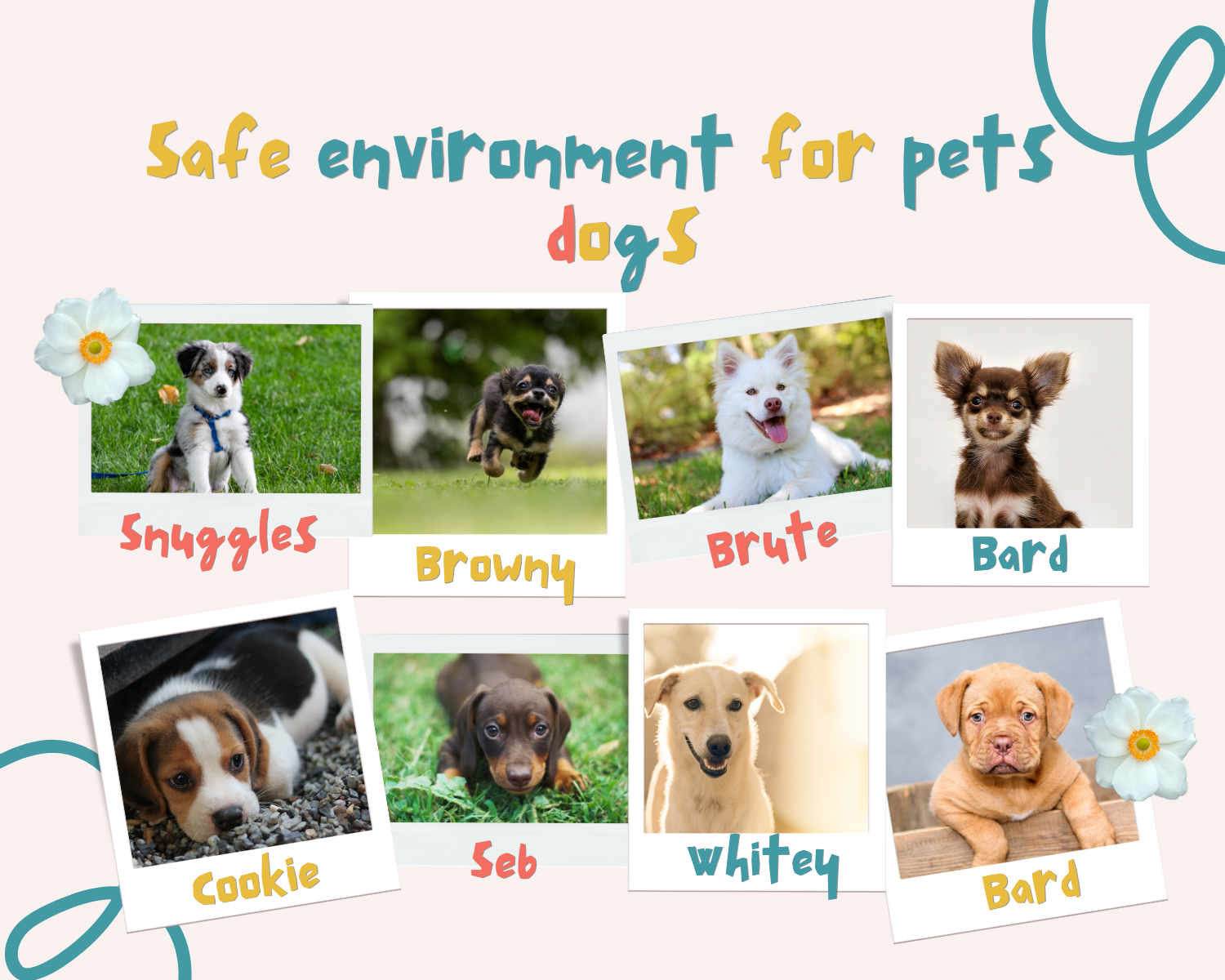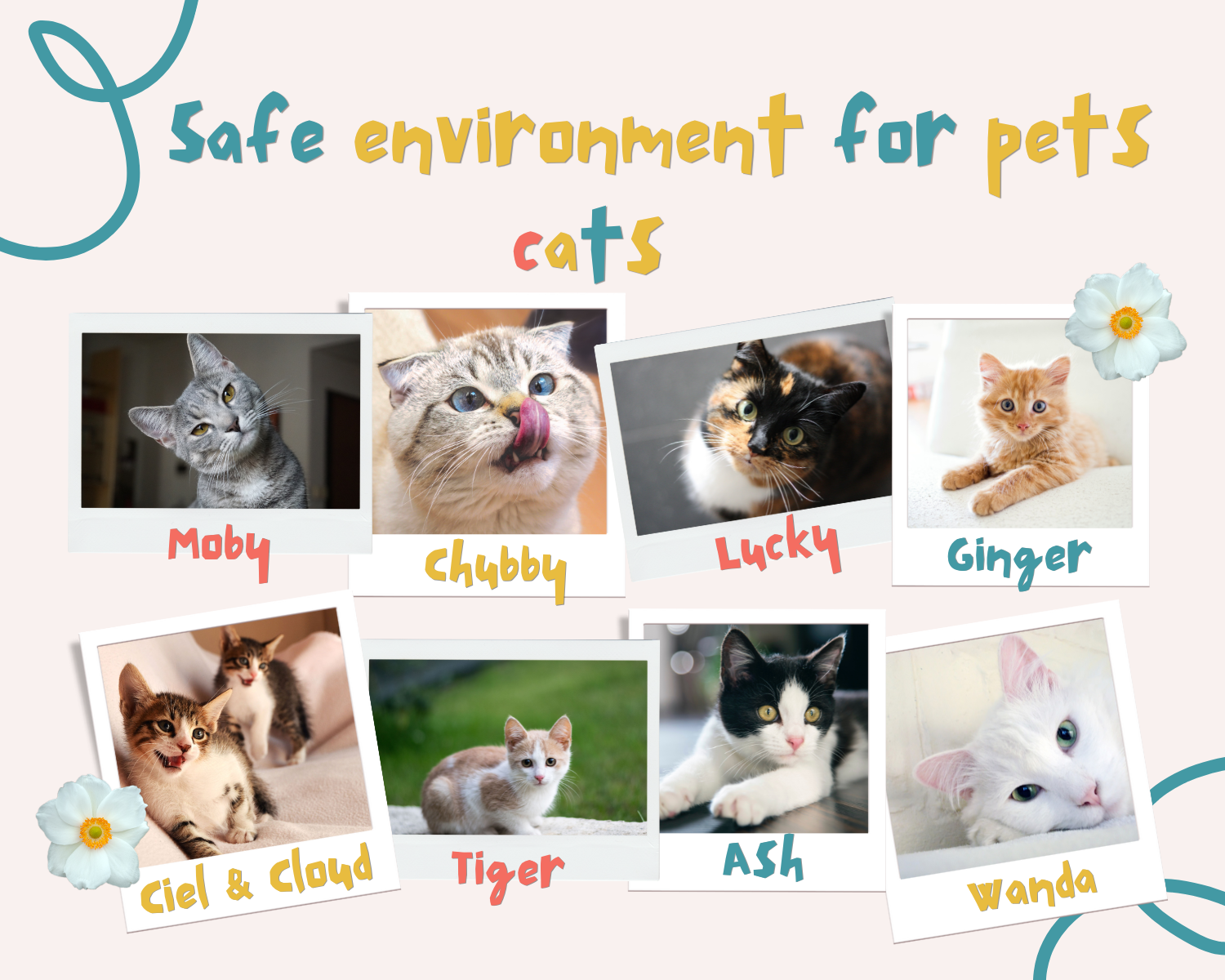Tips for Creating a Safe Environment for Dogs
Dogs are loyal companions who bring immense joy, love, and comfort to our lives. As a pet parent, it’s your responsibility to provide a safe and secure environment for your dog to thrive in. A safe environment ensures your dog’s physical and emotional well-being, protecting them from potential hazards while promoting a healthy and happy life. Here are some essential tips for creating a safe environment for your dog:
1. Dog-Proof Your Home
Dogs, especially puppies, are naturally curious and tend to explore their surroundings. It’s important to “dog-proof” your home by eliminating or securing anything that could potentially harm your furry friend.
- Hide harmful substances: Many household products—such as cleaning chemicals, pesticides, and human medications—can be toxic to dogs. Store these items out of reach, preferably in cabinets with child-proof locks. Also, keep foods like chocolate, grapes, onions, and garlic, which are toxic to dogs, securely stored.
- Secure cords and electrical outlets: Dogs, especially puppies, love to chew on cords. Use cord protectors or hide cords from electronics, lamps, and appliances. Additionally, cover electrical outlets to prevent your dog from sticking their nose or paws in dangerous places.
- Remove choking hazards: Small objects like rubber bands, hair ties, or toys with small parts can be a choking hazard for dogs. Make sure to keep these items out of reach and always inspect your dog’s toys for wear and tear to avoid accidental ingestion.
- Check for dangerous plants: Certain plants in your home or garden can be toxic to dogs. Common indoor plants like lilies, poinsettias, and ivy can cause serious health issues if ingested. Research safe plants for your home and remove any hazardous ones.
2. Create a Safe Sleeping Area
Dogs, like humans, need a quiet and safe place to sleep and relax. Providing a designated space for your dog to retreat to ensures they feel secure and comfortable in your home.
- Comfortable bedding: Invest in a cozy bed that suits your dog’s size and sleeping style. This helps your dog establish a sense of ownership over their space and provides them with a place to relax and rest peacefully.
- Calm environment: Choose a location in your home for your dog’s bed that is away from noisy distractions, like heavy foot traffic or loud electronics. This gives your dog a quiet, peaceful retreat where they can relax without being disturbed.
3. Ensure Outdoor Safety
If your dog has access to the outdoors, it’s crucial to create a safe environment to prevent accidents or dangerous situations.
- Fenced-in yard: Ensure your yard is securely fenced to keep your dog from running into the street or encountering potential dangers, such as other animals or traffic. Check regularly for gaps or holes in the fence that your dog could slip through.
- Leash and supervision: If your dog enjoys walks or spending time outside, always supervise them or use a leash when exploring outdoor areas. Even if your dog has good recall training, there are always potential dangers outside, like traffic, aggressive animals, or toxic plants.
- Safe play area: When your dog is in the backyard or other outdoor areas, ensure that the play environment is free of harmful items, such as sharp objects, toxic plants, or chemicals used in fertilizers. You can also create a designated play area where your dog can safely run and explore.
4. Provide Proper Identification
If your dog spends time outside or is off-leash in public areas, it’s essential to have proper identification in place to help reunite you if they get lost.
- ID tags and collar: Always have your dog wear a collar with an identification tag that includes your contact information. Make sure the collar is comfortable and fits properly. It’s a good idea to use a breakaway collar to ensure safety in case it gets caught on something.
- Microchip: In addition to an ID tag, consider microchipping your dog. Microchips are a permanent form of identification that can help you recover your dog if they are lost. It’s a simple and quick procedure done by a veterinarian, and it can make all the difference if your dog goes missing.
5. Prevent Access to Hazardous Areas
There are areas of your home or yard that may not be safe for your dog, so it’s important to control their access to these spaces.
- Block off dangerous areas: Use baby gates or pet barriers to keep your dog away from unsafe areas such as stairs, pools, or rooms with hazardous substances. If your dog is prone to jumping or exploring, these barriers can help keep them out of harm’s way.
- Safe storage of tools and equipment: Make sure tools, grills, and any other potentially dangerous equipment are securely stored away in a garage or shed where your dog can’t access them. Items like lawn mowers, power tools, and garden equipment can pose risks to dogs if left unattended.
6. Regular Exercise and Mental Stimulation
A safe environment isn’t just about physical safety—it’s also about ensuring your dog’s mental and emotional well-being. Dogs need both physical exercise and mental stimulation to remain healthy, content, and well-behaved.
- Regular walks and playtime: Make sure your dog gets daily exercise to burn off excess energy. This can include walks, runs, playtime in the yard, or interactive games. Regular physical activity helps prevent behavioral problems and keeps your dog in good shape.
- Engaging toys and puzzles: Keep your dog mentally stimulated by offering a variety of toys, puzzle feeders, and interactive activities. These can help prevent boredom, reduce anxiety, and provide a healthy outlet for their energy.
- Training and socialization: Ongoing training and positive reinforcement help build a strong bond with your dog while teaching them important behaviors. Socializing your dog with other animals and people is also essential to help them feel confident and safe in various situations.
7. Proper Nutrition and Health Care
A safe environment includes taking care of your dog’s overall health, ensuring they have access to proper nutrition, and receiving regular veterinary care.
- Healthy diet: Feed your dog high-quality food that meets their nutritional needs based on their age, size, and health condition. A balanced diet is essential for your dog’s physical and mental well-being.
- Routine veterinary visits: Regular check-ups with your vet are essential to ensure your dog is healthy and free from parasites, infections, or other health problems. Keep up with vaccinations, flea and tick prevention, and other necessary treatments.
- Grooming: Regular grooming not only keeps your dog looking their best, but it also helps prevent skin problems, matting, and the build-up of dirt or parasites. Brush your dog’s coat regularly and bathe them as needed, especially after outdoor activities.
8. Create a Calm and Stress-Free Environment
Dogs thrive in calm and structured environments. Reducing stress and providing consistency helps your dog feel secure and happy.
- Routine and structure: Dogs feel safer when they know what to expect. Establish a daily routine for feeding, walks, playtime, and bedtime. Consistency helps reduce anxiety and ensures your dog knows when to expect certain activities.
- Calming products: If your dog experiences anxiety, consider using calming products such as pheromone diffusers, calming collars, or anxiety wraps. These products can help reduce stress during stressful situations like thunderstorms or trips to the vet.


